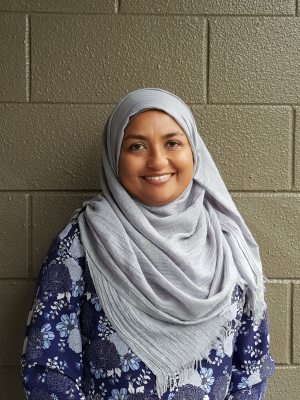4 Harmful Myths About Linguistically Minoritized Students
Too often, it is assumed that when students come from language and cultural backgrounds that are different from the mainstream, they are lacking in some way, and have less chance of success. Such deficit beliefs about linguistically minoritized students can cause them to feel disenfranchised and prevent them from experiencing equitable learning opportunities. They can diminish learning outcomes, negatively impact students’ self-perceptions, restrict their relationships with other students, and cause rifts between themselves and their communities. In this blog post, I’d like to draw attention to four such harmful beliefs—or myths—that are detrimental to multilingual learners from linguistically minoritized communities.
1. Students From Linguistically Minoritized Communities Are a Homogenous Group
Reality: Not all students are the same. They may represent different language and cultural groups in society, and they may be immigrants, from refugee backgrounds, or born in the country. It is important not to make assumptions about their immigration status or language background based on external factors. Similarly, students may not always be fluent in their heritage language. Some students may speak a different language at home but may not have full literacy in that language.
Because every student is different, it is essential that educators get to know each learner as an individual.
2. To Maximise Learning, Students Must Use the Language of Instruction All the Time, Including at Home
Reality: When students get more exposure to the language of instruction, it may certainly lead to significant language development, but at what expense? When the school and societal language is different from the language used at home, families may feel that their child is being disadvantaged. Some may feel pressured to switch to using the dominant language at home as well. This can be detrimental: It can lead to a lack of communication at home and cause children to lose their connection to their heritage language and culture. Multiple studies have shown that when students continue to use both their home language and the school language, they gain significant advantages in cognitive, academic, socioemotional, and linguistic areas of development.
Students and families should be encouraged and supported to continue speaking their home languages, and educators should make efforts to make this language welcome in the school setting.
3. Proficiency in English Is a Sign of Intelligence
Reality: The advantages of learning a language are well known. Multilinguals are shown to gain significant positive effects on the brain, including decision-making and the ability to multitask. But the inverse is not true. That is, intelligence is not an indicator of language learning ability. Sometimes, in fact, it may be difficult to distinguish between a language deficiency and a learning difficulty.
When designing assessments, it is important to ensure that language is not a barrier and that all students receive equitable opportunities.
4. Errors Should Be Corrected Immediately to Prevent Them From Becoming Permanent
Reality: Mistakes are an inevitable part of learning. Not every mistake is an error, and not every error needs to be immediately corrected. There are different ways in which student errors can be corrected. Consider the type of error, how persistent it is for the individual, how common it is across the group, and what stage of development the students are in. Did the error cause a break in the communication, for example? Or was the student’s meaning fully understood? Then there is a question of how the error should be corrected, as well.
Before correcting errors, consider if correction is necessary, and what the best strategy would be to make the correction.
Many harmful beliefs and assumptions have been the basis for policy development in schools and for unhelpful (or even harmful) classroom practice. It is time to rethink these beliefs and debunk the myths. Educators have a responsibility to make classrooms welcoming places for all students. Let’s not continue to make these myths a reality.

